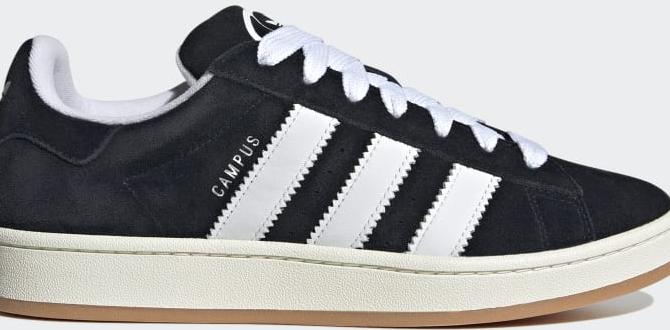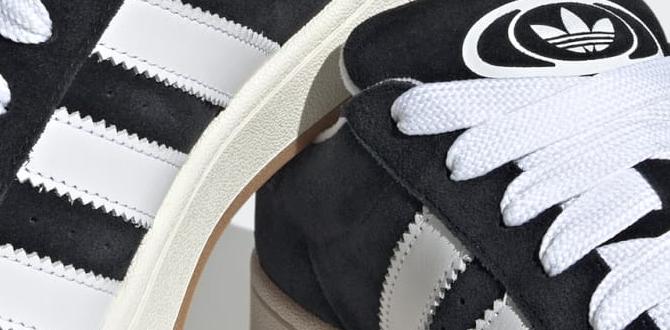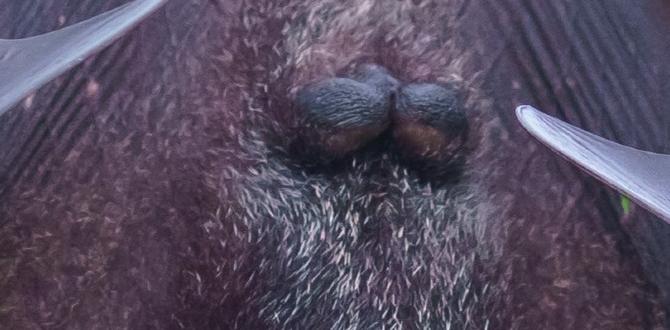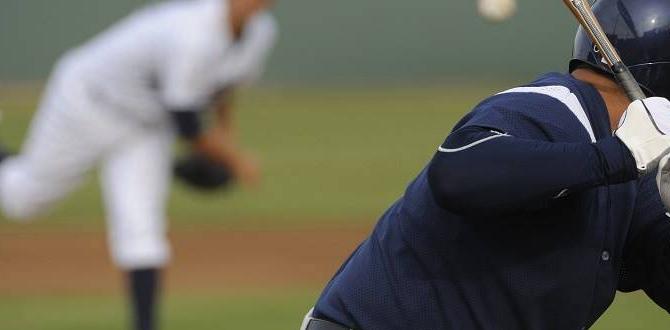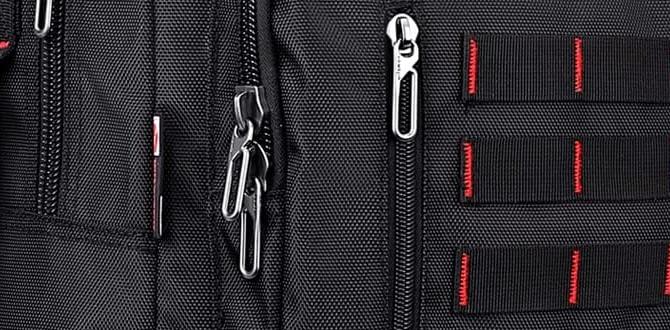Finding the right catchers glove for kids is crucial for comfort, protection, and developing good mechanics. This guide will help you select the perfect glove, ensuring your young catcher has the best gear to succeed behind the plate. We’ll cover key features, size recommendations, and top picks to make the process easy and effective for parents and players alike.
Picking the right catcher’s mitt for a young player can feel a bit overwhelming, especially with all the options out there. Many parents and young athletes wonder what makes one glove better than another, and how to find one that’s both comfortable and effective. A good mitt isn’t just about catching the ball; it’s about protecting little hands, building confidence, and setting them up for success on the field. Don’t worry, we’re here to break it all down! In this guide, we’ll walk through everything you need to know to select the best catchers glove for your young player, covering size, features, and what to look for. Get ready to find a glove that feels like an extension of their own hand!
Why the Right Catcher’s Mitt Matters for Kids
For young ballplayers stepping behind the plate, the catcher’s mitt is their most important piece of equipment. It’s not just any glove; it’s designed specifically to absorb the impact of fast pitches, provide a large target for the pitcher, and help transition the ball quickly for throws. A glove that’s too small, too stiff, or not designed for catching can lead to several problems:
- Pain and Injury: A mitt that doesn’t offer enough padding or isn’t properly broken in can make catching painful, discouraging young players and potentially leading to finger jams or bruising.
- Poor Development: An ill-fitting glove can hinder proper hand positioning and make it difficult to develop the correct catching technique, affecting everything from blocking to framing pitches.
- Frustration and Lack of Confidence: Dropping pitches or feeling constantly uncomfortable can be incredibly frustrating for a young athlete. The right mitt builds confidence and makes the game more enjoyable.
- Slower Progress: A well-suited glove helps new catchers learn faster by providing a secure pocket and making the catching process more intuitive.
Investing time in finding the right catchers glove for kids is an investment in their development, safety, and love for the game. It’s about giving them the best possible tool to succeed and enjoy their time as the backbone of the defense.
Key Features to Look For in a Kids Catcher’s Mitt
When you’re browsing for a catchers glove for kids, a few key features will make a big difference. Understanding these can help you narrow down your choices and pick a mitt that will serve your young player well:
1. Size and Fit
This is arguably the most critical factor for young catchers. Catcher’s mitts are measured by their circumference, not by length like fielder’s gloves. For kids, the ideal size depends on their age and the league they play in. Here’s a general guideline, but always check your league rules:
- Tee-ball and Youth Leagues (Ages 4-7): 30-32 inches
- Little League and Younger Youth (Ages 7-10): 31-33 inches
- Intermediate Youth (Ages 10-13): 32-34 inches
- High School and Above: 33-34 inches (these can also be used by younger players if they have larger hands and are in more advanced leagues)
The glove should feel snug but not constricting. The pocket should be deep enough to secure the ball but not so deep that it’s hard to close. A proper fit means the glove doesn’t slip off the hand during play and allows for good dexterity.
2. Padding and Protection
Young catcher’s hands are still developing, so ample padding is essential to absorb the shock of a pitched ball. Look for mitts with good cushioning in the palm and finger areas. High-quality padding can significantly reduce sting and protect against injuries. Some youth mitts might have slightly less dense padding than adult models to make them easier to close, but protection should still be a top priority.
3. Material
Catcher’s mitts are typically made from leather or synthetic materials.
- Full-Grain Leather: This is the highest quality leather. It’s durable, molds well to the hand over time, and offers excellent protection. However, it requires a longer break-in period and can be more expensive.
- Genuine Leather/Top Grain Leather: A good compromise. It’s still durable and offers decent protection but might be a bit softer than full-grain leather, leading to a slightly shorter break-in.
- Synthetic Leather/PU: These are often lighter and require minimal break-in, making them very beginner-friendly. They are also usually more affordable. The downside is that they may not be as durable or offer the same level of feel and protection as real leather.
For younger players or those just starting, a high-quality synthetic or a genuine leather mitt can be a great choice, balancing ease of use with durability. As a player gets older and more committed, investing in a full-grain leather mitt becomes more worthwhile.
4. Pocket Depth and Shape
The pocket is where the ball rests after being caught. For kids, a moderately deep pocket is ideal. It should be deep enough to trap the ball securely, preventing it from popping out, but not so deep that it becomes difficult for a young player to close their glove around it. The shape should also facilitate a quick transfer of the ball to the throwing hand. Many youth mitts are designed with a slightly shallower pocket to aid in closure.
5. Break-in Factor
Most catcher’s mitts, especially leather ones, come stiff and require a break-in period. For kids, ease of closure is paramount. A mitt that is too stiff can be challenging for a young player to close properly, impacting their ability to catch and throw. Some brands offer mitts that are pre-broken-in or designed to be more flexible from the start, which can be a huge advantage for beginners.
6. Wrist Strap and Adjustability
A secure fit is vital. Look for mitts with adjustable wrist straps (velcro or lace-up) that allow you to tighten the glove for a snug fit as your child grows or as the glove wears in. This ensures the glove stays on securely during quick movements and strong impacts.
Essential Catcher’s Mitts for Kids: Top Selections Backed by Experience
Choosing the right model can make all the difference for your young catcher. Based on durability, player feedback, and key features for young players, here are some of our top recommendations for catchers gloves for kids. These selections aim to balance performance, comfort, and value, making them excellent choices for beginners and developing players.
1. Rawlings R9 Series Youth Catcher’s Mitt
The Rawlings R9 Series is a popular choice for youth catchers and pitchers alike. These mitts are designed for durability and comfort, featuring a combination of genuine leather and synthetic elements for a good feel and quicker break-in. The R9 catcher’s mitts typically come in sizes like 31.5 or 32.5 inches, which are perfect for a wide range of youth players.
- Pros: Good balance of comfort and durability, relatively quick break-in, excellent padding, comfortable lining.
- Cons: May not be as durable as a full-grain leather mitt for very serious players, some find the pocket slightly shallow for advanced players.
- Ideal For: Little League, youth leagues, players aged 7-12.
2. Wilson A2000 or A360 Youth Catcher’s Mitt
Wilson is a powerhouse in baseball equipment, and their catcher’s mitts are highly regarded. The A360 is an excellent entry-level option that is designed for a faster break-in and is more forgiving for younger hands. It often comes in 31-32 inch sizes. For a step up, the A2000 line, while often more expensive and requiring more break-in, offers superior quality and feel for older or more serious youth players. Look for the A2000 M1DCM or M23 models in youth sizes (32-33 inches).
- Pros (A360): Very quick break-in, lightweight, comfortable for beginners, affordable.
- Pros (A2000, Youth Models): Premium leather feels great, excellent construction, superior durability, molds to the hand perfectly.
- Cons (A360): Less durable than higher-end models, can feel less substantial.
- Cons (A2000, Youth Models): Requires significant break-in time, can be expensive for a youth glove.
- Ideal For: A360 for young beginners (ages 6-10); A2000 for intermediate to advanced youth players (ages 10-14).
3. Mizuno Prospect Select or MVP Series Catcher’s Mitt
Mizuno is known for its quality craftsmanship. The Prospect Select series is designed specifically for youth players, often featuring Parashock Palm protection to absorb shock and a butter-soft lining for comfort. They are available in typical youth sizes like 31.5 or 32.5 inches. The MVP Prime line offers a step up in quality and performance, often using a combination of leather and other materials for optimal feel and durability.
- Pros: Excellent comfort and fit for young players, good padding, relatively quick break-in.
- Cons: Can be a bit pricier than basic synthetic gloves.
- Ideal For: Players aged 7-12 looking for a balance of performance and comfort.
4. Easton Game Soft / Stealth Catcher’s Mitt
Easton offers several lines that are great for young catchers. The Game Soft series is built for immediate playability, featuring soft leather and designed for minimal break-in. They often come in youth-specific sizes like 30, 31, or 32 inches. The Stealth models can offer a slightly more durable and performance-oriented option while still being accessible for young players.
- Pros: Very easy to close and break in, lightweight, comfortable.
- Cons: Durability might be a concern for players who are very hard on their gear.
- Ideal For: Beginners, tee-ballers, and players up to age 10 who need a glove they can use right away.
5. All-Star Catcher’s Mitts (e.g., CM1020, CM3000 Series)
All-Star is a brand synonymous with catcher’s gear. While some of their adult models are top-tier, they also have excellent youth options. The CM1020 series, for instance, is often recommended for younger players, featuring open-back designs and quality leather for good feel and durability. Their mitts are known for their deep pockets and excellent hand-shaped fit.
- Pros: Excellent quality and feel, great pocket design, durable.
- Cons: Can be more expensive, some models might require a bit of break-in.
- Ideal For: Dedicated youth catchers aged 9-13 who are serious about developing their skills.
Breaking in Your Catcher’s Mitt: A Step-by-Step Guide
No matter how premium the glove, it’s unlikely to be ready for game action right out of the box. A proper break-in ensures the mitt fits comfortably, closes easily, and lasts longer. Here’s how to do it effectively without damaging the glove:
Step 1: Understand Your Mitt’s Material
Leather mitts require more attention than synthetics. If you have a synthetic glove, you might only need a few sessions to get it game-ready. For leather mitts, follow these steps:
Step 2: The “Pocketing” Process
This is where you create the shape of the pocket. The goal is to train the leather to close around the ball.
- Use a Catcher’s Mitt Mallet or a Softball/Baseball: Place a ball (or a specialized mallet) in the center of the pocket.
- Close the Mitt: Grasp the glove around the ball and close your fingers and thumb.
- Apply Pressure: Hold it closed for about 20-30 seconds.
- Repeat: Do this at least 50-100 times. You can do this while watching TV or listening to music.
Step 3: Conditioning the Leather
A quality glove conditioner or an all-natural leather conditioner (like mink oil or neatsfoot oil, used sparingly) can help soften the leather and make it more pliable. Be careful not to over-condition, as this can make the glove too soft and decrease its lifespan.
- Apply Sparingly: Apply a small amount of conditioner to a clean cloth, not directly to the glove.
- Glove Interior: Focus on the inside of the pocket and the finger stalls.
- Let it Soak: Allow the conditioner to soak into the leather for a few hours or overnight.
- Wipe Off Excess: Use a clean, dry cloth to wipe away any excess conditioner.
Step 4: Flexing and Manual Manipulation
Regularly flexing the glove helps to loosen the laces and break in the leather joints.
- Open and Close: Manually open and close the mitt repeatedly.
- Pinch the Heel and Thumb: Gently pinch the heel and thumb together to help break in the hinge.
- Flex the Fingers: Work the fingers back and forth slightly.
Step 5: Storing Your Mitt
Proper storage keeps the glove’s shape and prevents it from drying out or getting deformed.
- Ball in the Pocket: Always store your mitt with a ball (or a glove shaper) in the pocket. This maintains the pocket’s shape.
- Wrap it Up: Use a rubber band or a glove strap to keep the outer laces and thumb/pinky fingers together. Avoid using string, as it can cut into the leather.
- Away from Heat: Store your mitt in a cool, dry place, away from direct sunlight or heat sources (like a car dashboard or a dryer). Heat can dry out and crack the leather.
Step 6: Practice, Practice, Practice!
The best way to break in a catcher’s mitt is to use it. Have your young player catch pitches from a coach or parent regularly. The more they use it in a game-like situation, the faster it will break in and perform its best.
When to Consider Upgrading Your Child’s Catcher’s Mitt
Even the best gloves wear out or become outgrown. Knowing when it’s time for an upgrade is part of managing your child’s gear. Here are some signs:
- Outgrown Size: The most obvious reason is that the mitt no longer fits properly, is too small, or the child’s hand is swimming in it. This can happen as they grow rapidly.
- Excessive Wear and Tear: If the stitching is coming undone, the leather is severely cracked or torn, or the padding is completely compressed and offers no shock absorption, it’s time for a new one.
- Player Development: As a player becomes more serious and develops their skills, they might benefit from a higher-quality mitt with better materials and design that offers a superior feel and performance. For example, moving from a synthetic to a quality leather mitt.
- Major Damage: If the mitt has sustained significant damage (e.g., a large rip, water damage that degraded the leather, or severe stiffness that can’t be corrected), it’s better to replace it.
- Competition Level: As young players move into higher levels of competition, the pace of the game increases. A more responsive and durable glove might become necessary to keep up.
It’s important to remember that younger players often go through a few gloves as they grow and their skills develop. Don’t be afraid to invest in a quality glove at each stage, ensuring your child always has the right equipment.

